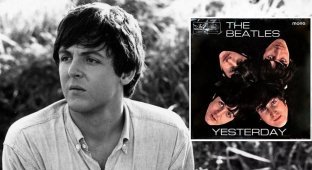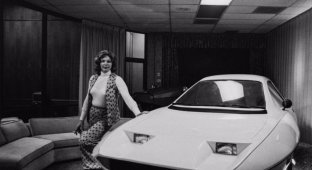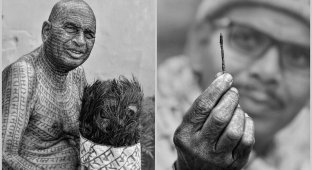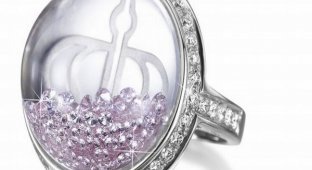Why an engagement ring should have a diamond (8 photos)
It has long been a tradition that when proposing marriage, it is important to present the chosen one with an engagement ring and certainly with a diamond. But why exactly is this so, when did this tradition actually appear and what does the Great Depression have to do with it? 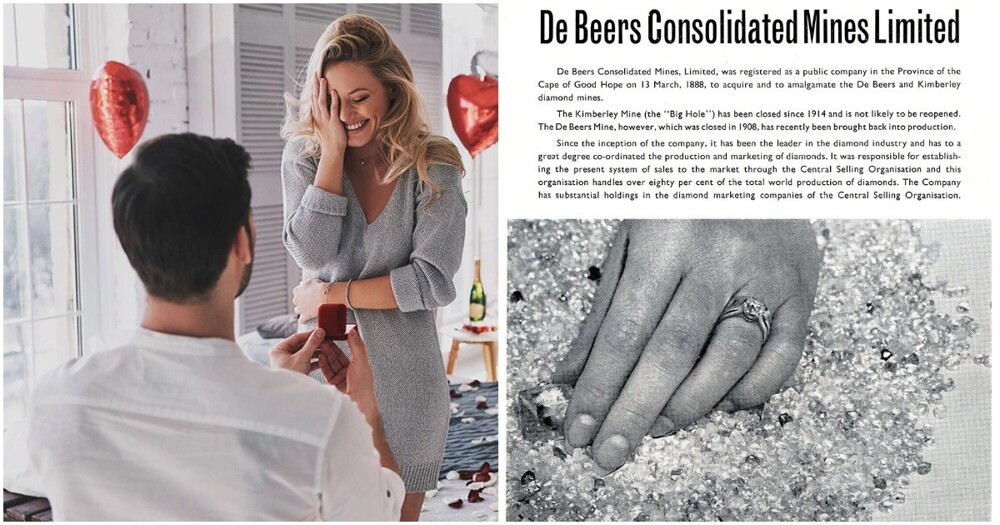
At the beginning of the 20th century, the custom of proposing with a ring had long become an established tradition, but for a long time the ring could be anything. Prince Albert, for example, presented Queen Victoria with an emerald ring in 1840. Sapphires and rubies were also in use.
But it is believed that one of the very first rings known to history was still with a diamond - the proposal was made by Archduke Maximilian of Austria in 1477. In general, until the end of the 19th century, diamonds were a very rare stone - they were found in India and Brazil, and production amounted to only a few pounds per year.
But in 1870, colossal diamond mines were found in South Africa and now their production could amount to several tons. English investors who invested in production could lose their investments - if a stone rushes into the market, its price will fall sharply. 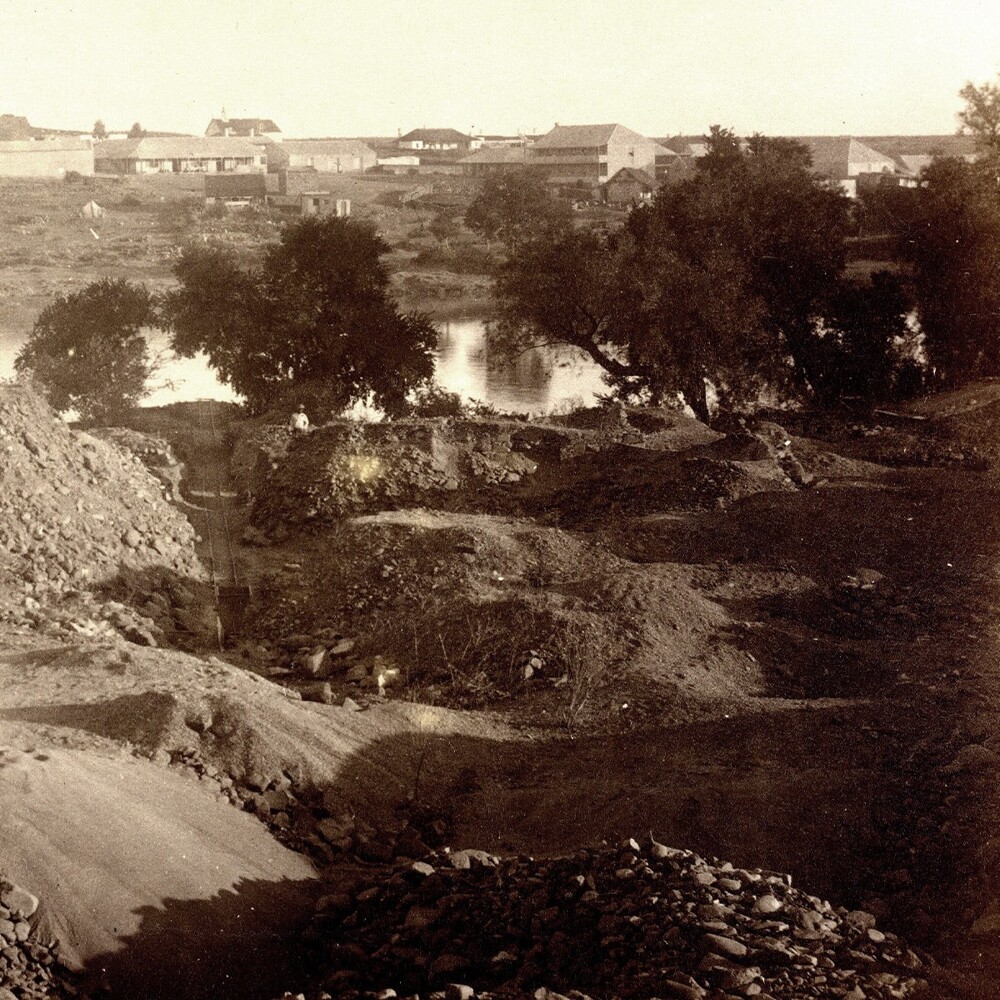
Diamond Mines of South Africa
In 1982, a journalist from the United States managed to reconstruct what was happening in the diamond market at that time.
The miners merged to form De Beers Consolidated Mines, Ltd, today better known as De Beers. They became almost a monopoly among diamond producers and regulated their prices from country to country. The price of gold and silver directly depended on economic conditions, but diamonds only grew in price. Already in 1938, the stone became a very popular accessory for engagement rings. 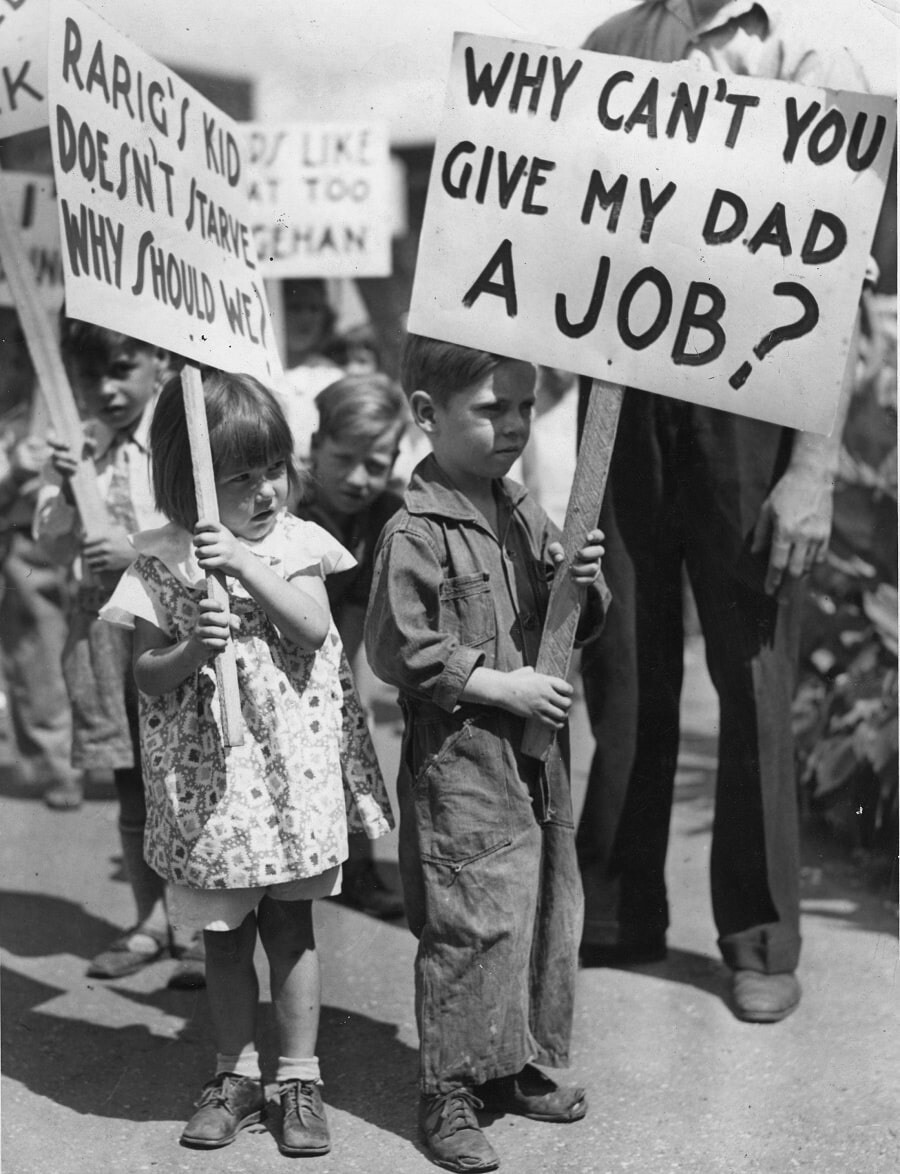
Photos from the Great Depression
The turning point was the Great Depression. People had no time for rings - they would have had enough to eat and feed their families. The demand for diamonds has plummeted, as has the demand for many valuables that have no practical value. It was impossible to buy food with beautiful stones and it simply became a thoughtless rich gesture. The fall of the American market has become a serious threat.
In Germany, Spain, Austria, the tradition with engagement rings was much weaker, and in France and England they were generally considered an aristocratic luxury, and in general there was no time for that, war was looming there. 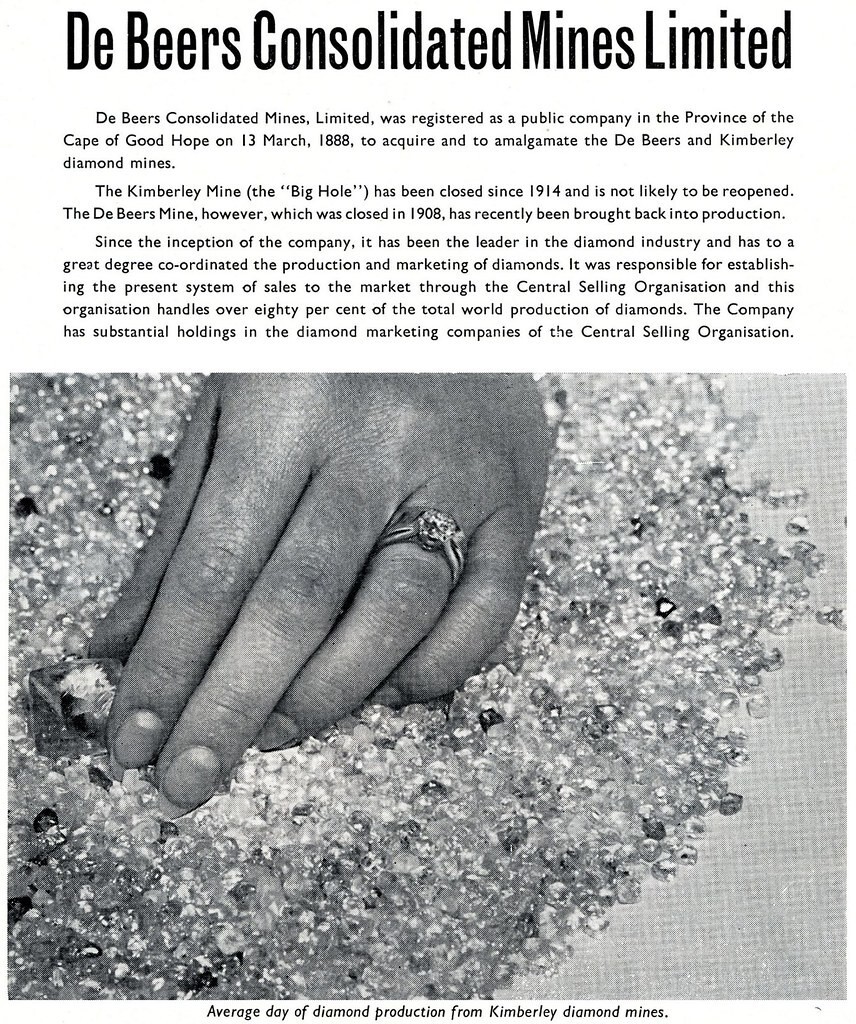
The American market became more important for De Beers than all others - three quarters of diamond sales, even small ones, went there. And so the company decided to contact the advertising agency N.W. Ayer to help them bring back American interest in diamond rings. But how can one return favor to stones if their value was already exaggerated, and almost no one could afford to buy them?
The agency carefully studied the market and realized that it was necessary to focus on engagement rings and romanticize them as much as possible. Moreover, make it so that the larger the stone, the stronger and purer the love of a man asking for the hand and heart of his chosen one. 
N.W. Ayer began to popularize diamonds through actors and the film industry. Communication on the radio, publications in magazines, photo shoots, they even gave lectures about diamonds in schools and generally wanted to lure the entire royal family into the campaign. Actresses wore diamonds both in films and at various social events.
The campaign peaked in 1947 with the slogan "A diamond is forever", created by copywriter N.W. Ayer Mary Garety. Such a slogan, implying not so much the hardness of stone as the idea of marriage forever, could not fail to work. And this phrase became the official slogan of De Beers.
And already in 1951, eight out of ten American brides wore a diamond engagement ring on their ring finger.
The campaign was so successful that it moved to other countries. 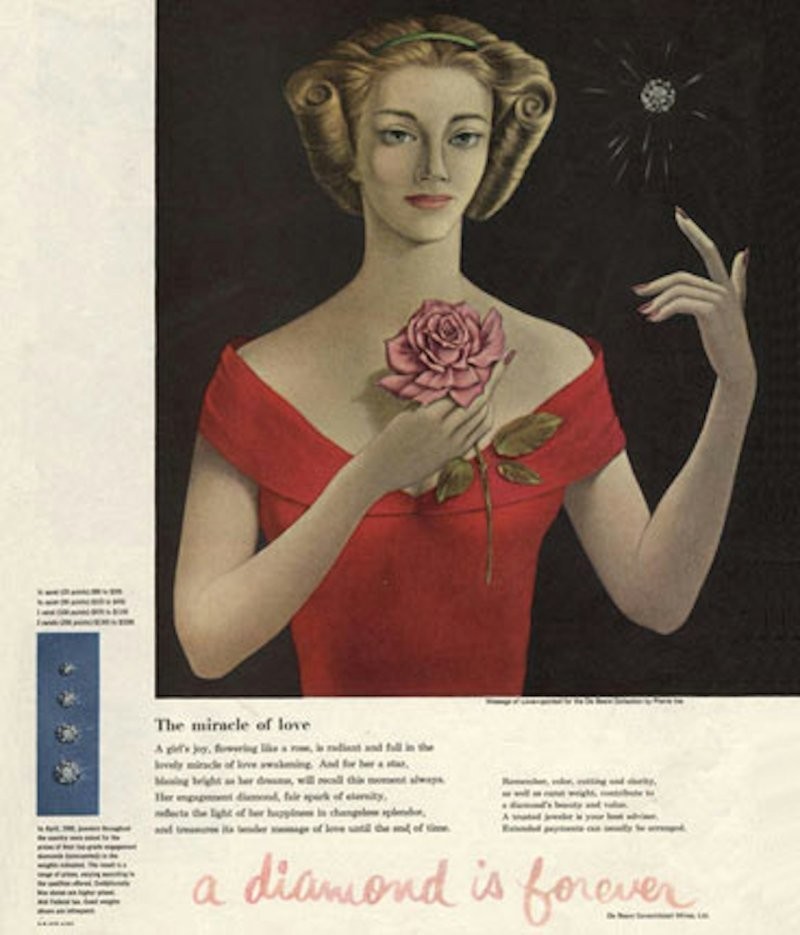
N.W. Ayer came up with and chose this slogan to increase the demand for diamond sales in America. But the idea also quickly developed the custom of passing diamond rings from generation to generation, so that the market would not become saturated with oversold jewelry. Like this. One big tragedy has led to the fact that now, if you contact anyVeliry house in search of an engagement ring, then 95% there will only be rings with diamonds. 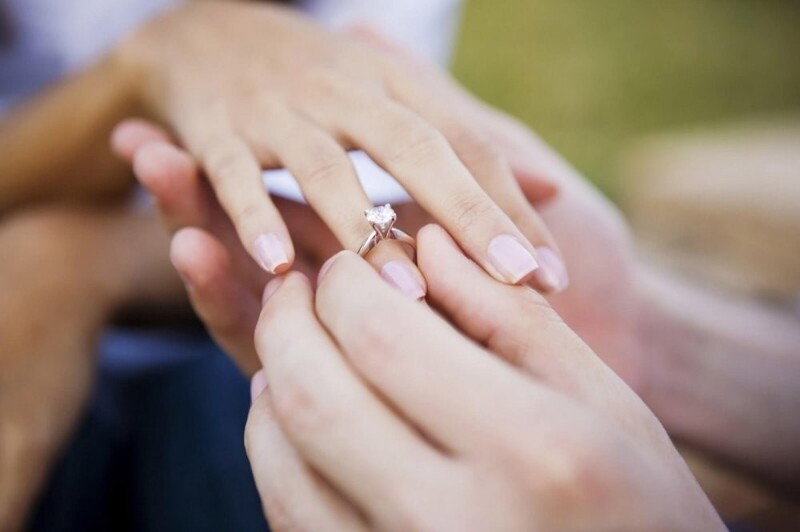
Here are some more interesting facts about rings:
The old rule says: a man spends one or three of his salaries on an engagement ring. Today, studies have shown that on average men spend a little less than a month's salary on such a ring.
In the past, when women were not working, an engagement ring was also given to a woman as a sign of financial strength and commitment. Thus, the potential groom demonstrated the ability to support her. Also, the ring could help a woman survive if she suddenly became widowed and needed to support herself and her children for some time.
surveys have shown that men spend 1 to 3 months searching for engagement rings. Over the entire period, they review and compare, on average, 27 ring models. 
But in fact, today all these traditions have ceased to be so important. Today, couples in love themselves determine the cost, and indeed the need for not only engagement rings, but even wedding rings. For some it is an important symbol of the next initiation, but for others it is just decoration. After all, the main thing is the sincerity of mutual feelings, which is still strange to measure in carats.













